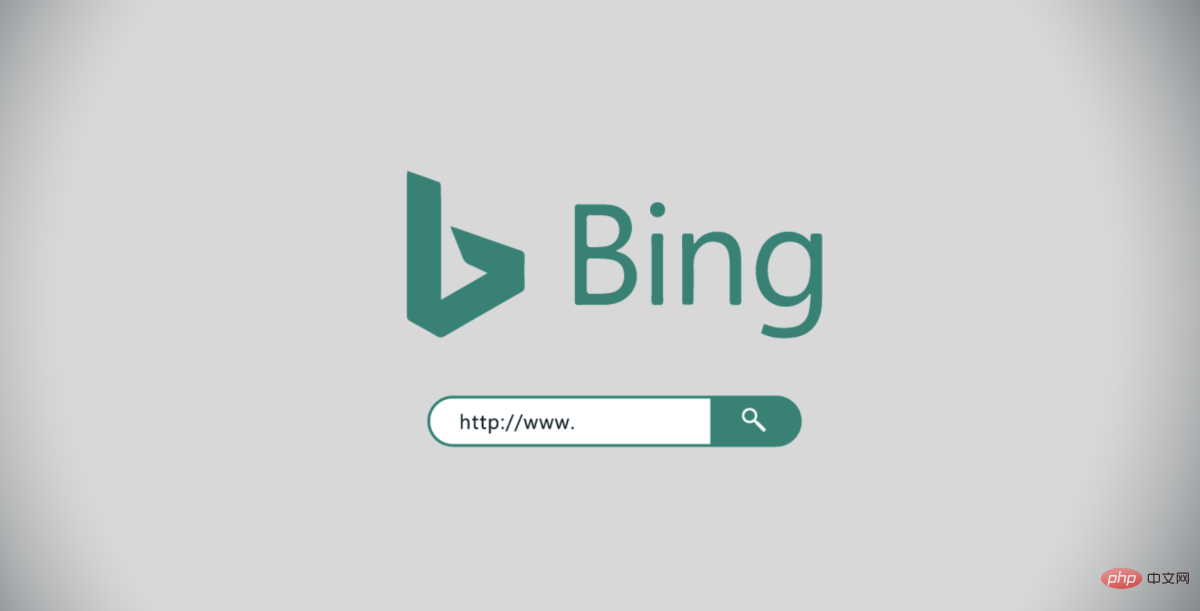 Technology peripherals
Technology peripherals AI
AI US media reveals large model training data set: some content is a bit 'dirty'
US media reveals large model training data set: some content is a bit 'dirty'
News on April 20th, artificial intelligence chatbots have become increasingly popular in the past four months, and they are able to complete a variety of tasks, such as writing complex academic papers and conducting research. Intense dialogue and amazing abilities.
Chatbots don’t think like humans, they don’t even know what they’re talking about. They can mimic human speech because the artificial intelligence that drives them has absorbed vast amounts of text, much of it scraped from the internet.
These texts are the AI’s primary source of information about the world during its construction, and they can have a profound impact on how the AI responds. If artificial intelligence achieves excellent results on the judicial examination, it may be because its training data contains thousands of LSAT (Law School Admission Test, American Law School Admission Test) information.
Tech companies are always secretive about what information they provide to artificial intelligence. So The Washington Post set out to analyze one of these important data sets, revealing the types of proprietary, personal and often offensive websites used to train AI.
To explore the internal makeup of artificial intelligence training data, the Washington Post teamed up with researchers from the Allen Institute for Artificial Intelligence to analyze Google’s C4 data set. This dataset is a massive snapshot of more than 15 million websites, the content of which is used to train many high-profile English-language AIs, such as Google’s T5 and Facebook’s LLaMA. OpenAI did not disclose what kind of data set they used to train the model that supports the chatbot ChatGPT.
For the survey, researchers used data from web analytics company Similarweb to classify websites. About a third of these sites could not be classified and were excluded, mainly because they no longer exist on the Internet. The researchers then ranked the remaining 10 million websites based on the number of "tokens" that appeared on each website in the data set. A token is a small piece of text processing information, usually a word or phrase, used to train AI models.
From Wikipedia to WoWhead

Websites in the C4 dataset are mainly from industries such as news, entertainment, software development, medical and content creation. This could explain why these fields may be threatened by a new wave of artificial intelligence. The top three websites are: the first is Google Patent Search, which contains patent texts published around the world; the second is Wikipedia; and the third is Scribd, a digital library that only accepts paid subscriptions. In addition, other high-ranking websites include the pirated e-book marketplace Library (No. 190), which was shut down by the U.S. Department of Justice for illegal activities. In addition, there are at least 27 websites in the data set that have been identified by the US government as markets for pirated and counterfeit products.
Also featured are some of the top sites, such as wowhead (No. 181), a forum for World of Warcraft players, and a website founded by Arianna Huffington to help combat burnout. Website ThriveGlobal (No. 175). Additionally, there are at least 10 websites selling dumpsters, including dumpsteroid (No. 183), but it appears to be no longer accessible.
Although most websites are safe, some have serious privacy issues. For example, two websites ranked in the top 100 list privately hosted copies of state voter registration databases. While voter data is public, these models may use this personal information in unknown ways.
Industrial and commercial websites occupy the largest category (accounting for 16% of classified tokens). Topping the list is The Motley Fool (No. 13), which provides investment advice. Next is Kickstarter (No. 25), a website that allows users to crowdfund creative projects. Patreon, which ranks lower at No. 2,398, helps creators collect monthly fees from subscribers for exclusive content.
However, Kickstarter and Patreon may allow artificial intelligence to access artists’ ideas and marketing copy, raising concerns that AI may copy these works when providing suggestions to users. Artists, who currently do not receive any compensation when their work is included in AI training data, have filed infringement claims against text-to-image generators Stable Diffusion, MidJourney and DeviantArt.
According to this Washington Post analysis, more legal challenges may be coming: There are more than 200 million occurrences of the copyright symbol (indicating works registered as intellectual property) in the C4 data set.
Technical websites are the second largest category, accounting for 15% of classified tokens. This includes many platforms that help people build websites, such as Google Sites (No. 85), which has pages covering everything from a judo club in Reading, England, to a kindergarten in New Jersey.
The C4 data set also contains more than 500,000 personal blogs, accounting for 3.8% of classified content. Publishing platform Medium ranks 46th and is the fifth largest technology website, with tens of thousands of blogs under its domain name. In addition, there are blogs written on platforms such as WordPress, Tumblr, Blogpot, and Live Journal.
These blogs range from the professional to the personal, such as a blog called "Grumpy Rumblings" co-authored by two anonymous academics, one of whom recently wrote about how their partner lost his job. How it affects a couple's taxes. In addition, there are some top blogs focusing on live-action role-playing games in the C4 dataset.
The content of social networks such as Facebook and Twitter (which are considered the core of the modern web) is blocked from crawling, which means that most data sets used to train artificial intelligence cannot access them. Tech giants like Facebook and Google are sitting on vast amounts of conversational data, but they don’t yet know how to use personal user information to train artificial intelligence models for internal use or to sell as products.
News and media sites ranked third across all categories, and half of the top ten sites were news outlets: The New York Times ranked fourth, the Los Angeles Times ranked sixth, and the Guardian Newspaper website ranked seventh, Forbes website ranked eighth, Huffington Post website ranked ninth, and Washington Post website ranked 11th. Like artists and creators, several news organizations have criticized tech companies for using their content without authorization or compensation.
At the same time, the "Washington Post" also found that several media ranked lower in NewsGuard's independent credibility rating: such as Russia's RT (65th), the far-right news website Breitbart ( No. 159) and anti-immigrant website vdare (No. 993), which is linked to white supremacy.
Chatbots have been proven to share misinformation. Untrustworthy training data can lead them to spread bias and promote misinformation without users being able to trace them to their original source.
Community websites account for about 5% of classified content, mainly religious websites.
What fish are missing from the filter?
Like most companies, Google filters and screens data before feeding it to AI. In addition to removing meaningless and repetitive text, the company also uses an open-source "bad word list" that includes 402 English terms and an emoji. Companies often use high-quality data sets to fine-tune models to block content users don’t want to see.
While such lists are intended to limit models being trained on racial slurs and inappropriate content, a lot of things make it past the filter. The Washington Post found hundreds of pornographic websites and more than 72,000 examples of "Nazi" on the banned word list.
Meanwhile, The Washington Post found that the filters failed to remove some disturbing content, including white supremacist websites, anti-trans websites and sites known for organizing harassment campaigns against individuals. The anonymous message board 4chan. The study also uncovered websites promoting conspiracy theories.
Is your website used for training AI?
Web scraping may sound like copying the entire Internet, but it's actually just collecting snapshots, a sample of web pages at a specific moment in time. The C4 dataset was originally created by the non-profit organization CommonCrawl for web content crawling in April 2019 and is a popular resource for artificial intelligence model training. CommonCrawl said the organization tried to prioritize the most important and reputable websites but made no attempt to avoid licensed or copyright-protected content.
The Washington Post believes that it is critical to present the complete content of data in artificial intelligence models that are expected to manage many aspects of people’s modern lives. However, many websites in this dataset contain highly offensive language, and even if the model is trained to mask these words, objectionable content may still be present.
Experts say that although the C4 data set is large, large language models may use even larger data sets. For example, OpenAI released GPT-3 training data in 2020, which has 40 times the amount of web scraped data in C4. GPT-3’s training data includes all of the English Wikipedia, a collection of free novels by unpublished authors frequently used by large tech companies, and a compilation of linked text highly rated by Reddit users.
Experts say many companies don’t even log the contents of their training data (even internally) for fear of finding out about personally identifiable information, copyrighted material and other data that has been stolen without consent. . As companies highlight the challenge of explaining how chatbots make decisions, this is an area where executives need to give transparent answers.
The above is the detailed content of US media reveals large model training data set: some content is a bit 'dirty'. For more information, please follow other related articles on the PHP Chinese website!
 2023年机器学习的十大概念和技术Apr 04, 2023 pm 12:30 PM
2023年机器学习的十大概念和技术Apr 04, 2023 pm 12:30 PM机器学习是一个不断发展的学科,一直在创造新的想法和技术。本文罗列了2023年机器学习的十大概念和技术。 本文罗列了2023年机器学习的十大概念和技术。2023年机器学习的十大概念和技术是一个教计算机从数据中学习的过程,无需明确的编程。机器学习是一个不断发展的学科,一直在创造新的想法和技术。为了保持领先,数据科学家应该关注其中一些网站,以跟上最新的发展。这将有助于了解机器学习中的技术如何在实践中使用,并为自己的业务或工作领域中的可能应用提供想法。2023年机器学习的十大概念和技术:1. 深度神经网
 人工智能自动获取知识和技能,实现自我完善的过程是什么Aug 24, 2022 am 11:57 AM
人工智能自动获取知识和技能,实现自我完善的过程是什么Aug 24, 2022 am 11:57 AM实现自我完善的过程是“机器学习”。机器学习是人工智能核心,是使计算机具有智能的根本途径;它使计算机能模拟人的学习行为,自动地通过学习来获取知识和技能,不断改善性能,实现自我完善。机器学习主要研究三方面问题:1、学习机理,人类获取知识、技能和抽象概念的天赋能力;2、学习方法,对生物学习机理进行简化的基础上,用计算的方法进行再现;3、学习系统,能够在一定程度上实现机器学习的系统。
 超参数优化比较之网格搜索、随机搜索和贝叶斯优化Apr 04, 2023 pm 12:05 PM
超参数优化比较之网格搜索、随机搜索和贝叶斯优化Apr 04, 2023 pm 12:05 PM本文将详细介绍用来提高机器学习效果的最常见的超参数优化方法。 译者 | 朱先忠审校 | 孙淑娟简介通常,在尝试改进机器学习模型时,人们首先想到的解决方案是添加更多的训练数据。额外的数据通常是有帮助(在某些情况下除外)的,但生成高质量的数据可能非常昂贵。通过使用现有数据获得最佳模型性能,超参数优化可以节省我们的时间和资源。顾名思义,超参数优化是为机器学习模型确定最佳超参数组合以满足优化函数(即,给定研究中的数据集,最大化模型的性能)的过程。换句话说,每个模型都会提供多个有关选项的调整“按钮
 得益于OpenAI技术,微软必应的搜索流量超过谷歌Mar 31, 2023 pm 10:38 PM
得益于OpenAI技术,微软必应的搜索流量超过谷歌Mar 31, 2023 pm 10:38 PM截至3月20日的数据显示,自微软2月7日推出其人工智能版本以来,必应搜索引擎的页面访问量增加了15.8%,而Alphabet旗下的谷歌搜索引擎则下降了近1%。 3月23日消息,外媒报道称,分析公司Similarweb的数据显示,在整合了OpenAI的技术后,微软旗下的必应在页面访问量方面实现了更多的增长。截至3月20日的数据显示,自微软2月7日推出其人工智能版本以来,必应搜索引擎的页面访问量增加了15.8%,而Alphabet旗下的谷歌搜索引擎则下降了近1%。这些数据是微软在与谷歌争夺生
 荣耀的人工智能助手叫什么名字Sep 06, 2022 pm 03:31 PM
荣耀的人工智能助手叫什么名字Sep 06, 2022 pm 03:31 PM荣耀的人工智能助手叫“YOYO”,也即悠悠;YOYO除了能够实现语音操控等基本功能之外,还拥有智慧视觉、智慧识屏、情景智能、智慧搜索等功能,可以在系统设置页面中的智慧助手里进行相关的设置。
 人工智能在教育领域的应用主要有哪些Dec 14, 2020 pm 05:08 PM
人工智能在教育领域的应用主要有哪些Dec 14, 2020 pm 05:08 PM人工智能在教育领域的应用主要有个性化学习、虚拟导师、教育机器人和场景式教育。人工智能在教育领域的应用目前还处于早期探索阶段,但是潜力却是巨大的。
 30行Python代码就可以调用ChatGPT API总结论文的主要内容Apr 04, 2023 pm 12:05 PM
30行Python代码就可以调用ChatGPT API总结论文的主要内容Apr 04, 2023 pm 12:05 PM阅读论文可以说是我们的日常工作之一,论文的数量太多,我们如何快速阅读归纳呢?自从ChatGPT出现以后,有很多阅读论文的服务可以使用。其实使用ChatGPT API非常简单,我们只用30行python代码就可以在本地搭建一个自己的应用。 阅读论文可以说是我们的日常工作之一,论文的数量太多,我们如何快速阅读归纳呢?自从ChatGPT出现以后,有很多阅读论文的服务可以使用。其实使用ChatGPT API非常简单,我们只用30行python代码就可以在本地搭建一个自己的应用。使用 Python 和 C
 人工智能在生活中的应用有哪些Jul 20, 2022 pm 04:47 PM
人工智能在生活中的应用有哪些Jul 20, 2022 pm 04:47 PM人工智能在生活中的应用有:1、虚拟个人助理,使用者可通过声控、文字输入的方式,来完成一些日常生活的小事;2、语音评测,利用云计算技术,将自动口语评测服务放在云端,并开放API接口供客户远程使用;3、无人汽车,主要依靠车内的以计算机系统为主的智能驾驶仪来实现无人驾驶的目标;4、天气预测,通过手机GPRS系统,定位到用户所处的位置,在利用算法,对覆盖全国的雷达图进行数据分析并预测。


Hot AI Tools

Undresser.AI Undress
AI-powered app for creating realistic nude photos

AI Clothes Remover
Online AI tool for removing clothes from photos.

Undress AI Tool
Undress images for free

Clothoff.io
AI clothes remover

AI Hentai Generator
Generate AI Hentai for free.

Hot Article

Hot Tools

SublimeText3 English version
Recommended: Win version, supports code prompts!

Safe Exam Browser
Safe Exam Browser is a secure browser environment for taking online exams securely. This software turns any computer into a secure workstation. It controls access to any utility and prevents students from using unauthorized resources.

Zend Studio 13.0.1
Powerful PHP integrated development environment

DVWA
Damn Vulnerable Web App (DVWA) is a PHP/MySQL web application that is very vulnerable. Its main goals are to be an aid for security professionals to test their skills and tools in a legal environment, to help web developers better understand the process of securing web applications, and to help teachers/students teach/learn in a classroom environment Web application security. The goal of DVWA is to practice some of the most common web vulnerabilities through a simple and straightforward interface, with varying degrees of difficulty. Please note that this software

mPDF
mPDF is a PHP library that can generate PDF files from UTF-8 encoded HTML. The original author, Ian Back, wrote mPDF to output PDF files "on the fly" from his website and handle different languages. It is slower than original scripts like HTML2FPDF and produces larger files when using Unicode fonts, but supports CSS styles etc. and has a lot of enhancements. Supports almost all languages, including RTL (Arabic and Hebrew) and CJK (Chinese, Japanese and Korean). Supports nested block-level elements (such as P, DIV),






